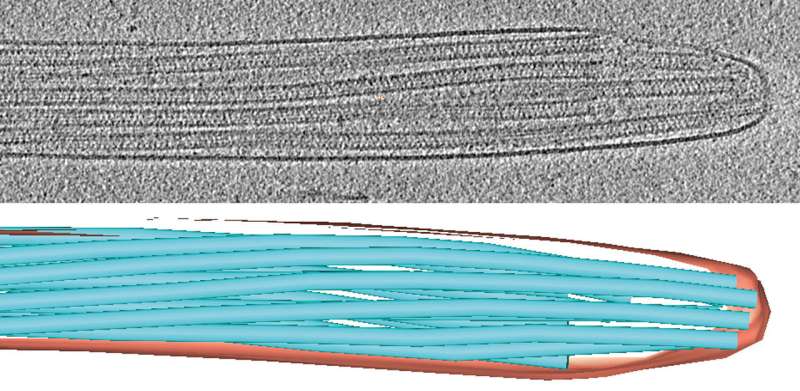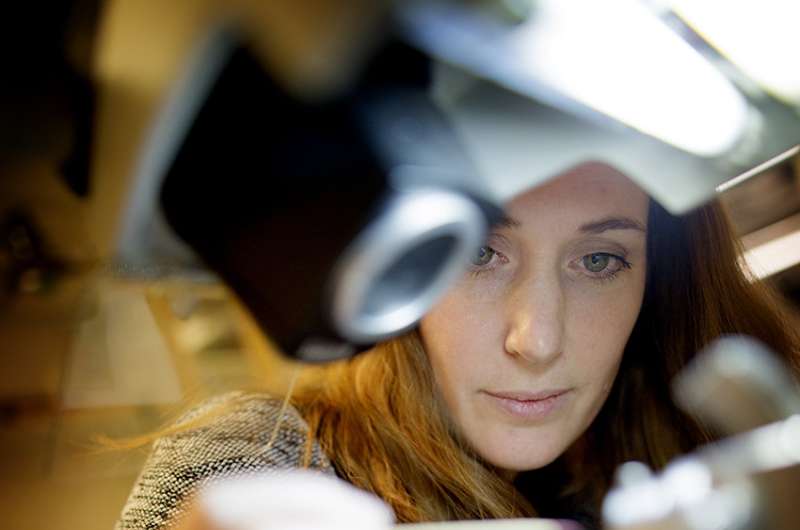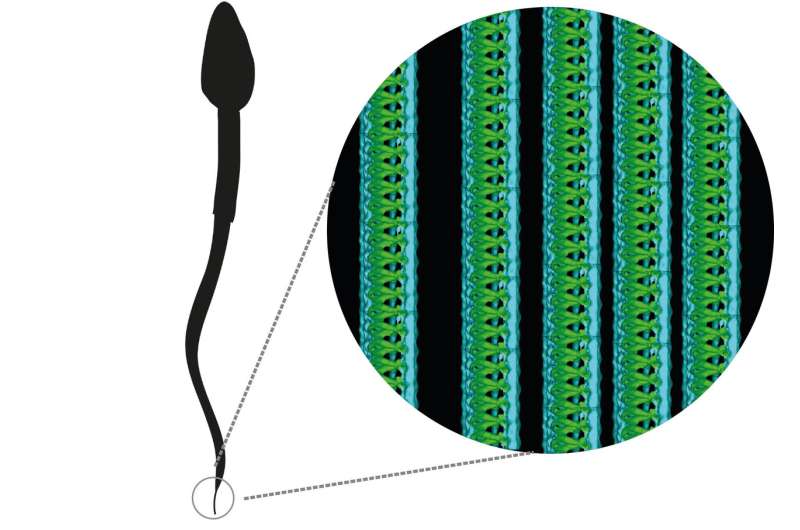New structure discovered in human sperm tails

A highly effective tail is needed in order for a sperm to be able to swim, and for a baby to be conceived. By using cryo-electron tomography, researchers at the University of Gothenburg working in partnership with researchers in the U.S. have identified a completely new nanostructure inside sperm tails.
Despite the importance of sperm, little is known about their tail structure. Now, an international team of researchers has identified a completely new nanostructure inside sperm tails, thanks to the use of cryo-electron tomography.
The method, for which Joachim Frank, Jacques Dubochet and Richard Henderson were awarded a Nobel Prize in 2017, produces 3-D images of cellular structures. "Since the cells are depicted frozen in ice, without the addition of chemicals which can obscure the smallest cell structures, even individual proteins inside the cell can be observed," explains Johanna Höög, a research at the University of Gothenburg's Department of Chemistry and Molecular Biology.
A highly effective tail is needed in order for a sperm to be able to swim, and for an egg to be fertilised.
The tail is a highly complex machine that consists of around 1000 types of building blocks. The most important of these are called tubulins, which form long tubes (microtubules). The tubes are found inside the sperm tail. Thousands of motorproteins—molecules that can move—are affixed to these tubes. By being fixed to one microtubule and "walking" on the adjacent microtubule, the motorproteins in the sperm tail pull and the tail bends, enabling the sperm to swim.

"It's actually quite incredible that it can work," says Johanna, who led the study. "The movement of thousands of motorproteins has to be coordinated in the minutest of detail in order for the sperm to be able to swim." The research was intended to see what human sperm tails look like in 3-D. This provides clues about how sperm work, in the same way that a sketch of an engine helps to explain how it operates.
"When we looked at the first 3-D images of the very end section of a sperm tail, we spotted something we had never seen before inside the microtubules: spiral that stretched in from the tip of the sperm and was about a tenth of the length of the tail."

What the spiral is doing there, what it consists of and whether it is important in order for sperms to swim are questions that the research team will now focus on answering.
"We believe that this spiral may act as a cork inside the microtubules, preventing them from growing and shrinking as they would normally do, and instead allowing the sperm's energy to be fully focussed on swimming quickly towards the egg," says Davide Zabeo, the lead Ph.D. student behind the discovery.
The study has been published in the journal Scientific Reports.
More information: Davide Zabeo et al, A lumenal interrupted helix in human sperm tail microtubules, Scientific Reports (2018). DOI: 10.1038/s41598-018-21165-8


















